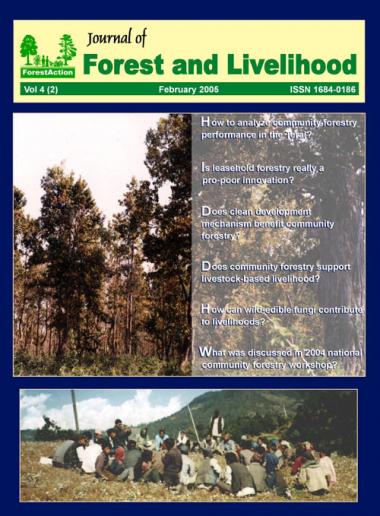Community Based Forest Management Systems in Developing Countries and Eligibility for Clean Development Mechanism
DOI:
https://doi.org/10.3126/jfl.v4i2.59790Keywords:
community based forest management, community based forest management system, community forestry, clean development mechanism, Developing countries, NepalAbstract
Carbon sequestration rates can be maintained or increased by afforestation, reforestation, avoided deforestation, forest preservation and particular tending and cultural operations on existing forests. Of these, afforestation and reforestation are the only eligible project activities under the Clean Development Mechanism (CDM). Of the three market-based mechanisms of the Kyoto Protocol (KP), CDM is the only one designed for developing countries where, coincidently, community based forest management systems (CBFMS) are becoming the main form of forest management. Using Nepal as a case study, this paper explains why community forestry (a form of community based natural resource management) may not be eligible for CDM project activities. We then argue why enhanced natural regeneration and forest preservation activities should be considered under the CDM project activities. If community forests contribute to achieving the main objectives of CDM program as well as providing biodiversity benefits, and if they are the only socially acceptable and economically viable option, we argue that they should be eligible under the CDM project activities. In particular, the CDM forest definition (>10% crown cover) should not be a barrier to their eligibility.
Downloads
Downloads
Published
How to Cite
Issue
Section
License

This work is licensed under a Creative Commons Attribution-NonCommercial 4.0 International License.
CC-BY-NC: This license allows reusers to distribute, remix, adapt, and build upon the material in any medium or format for noncommercial purposes only, and only so long as attribution is given to the creator.





